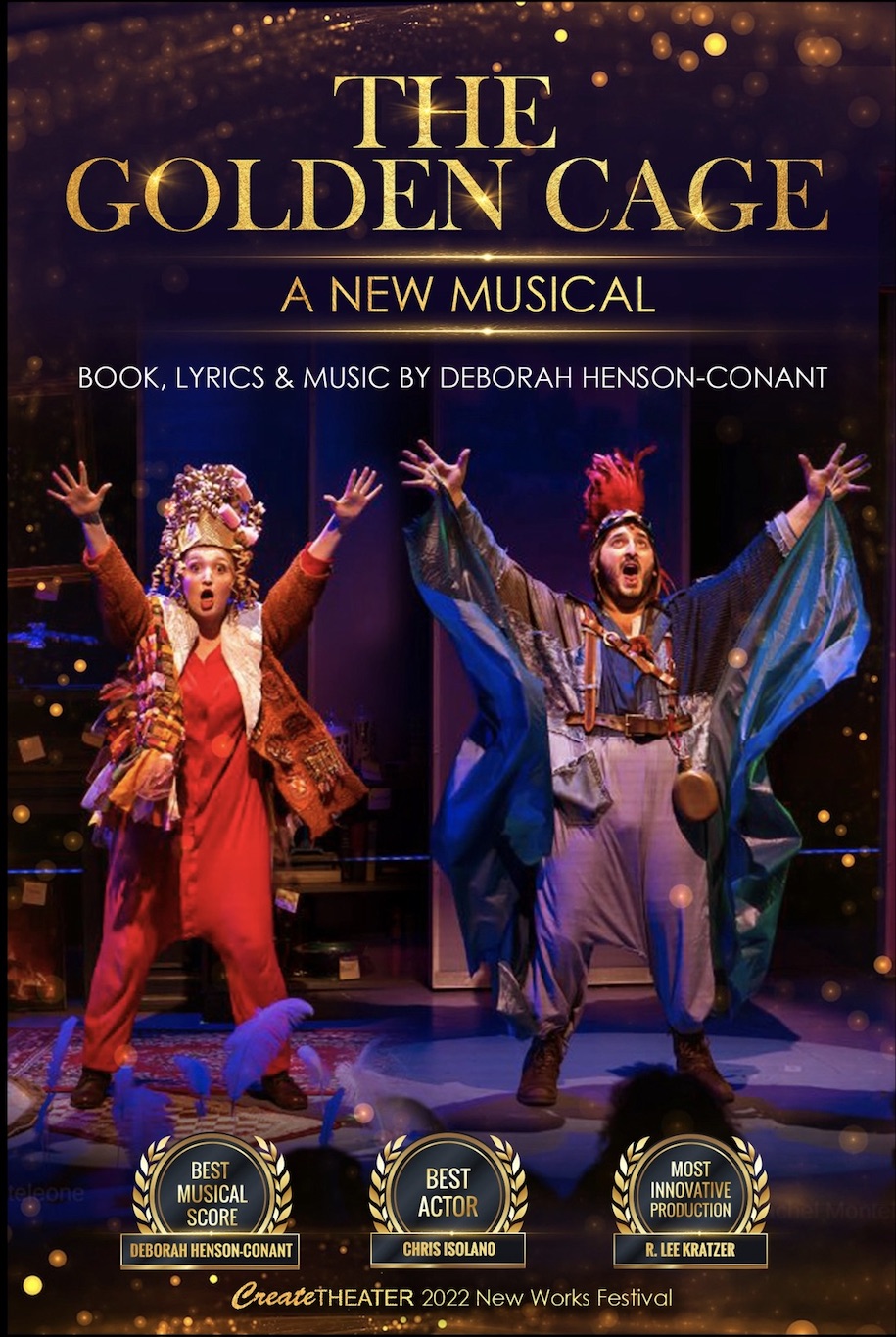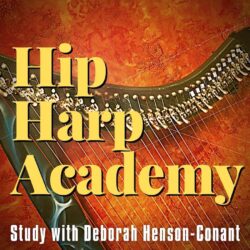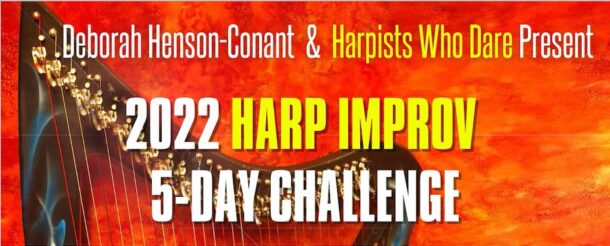This is one of the final projects submitted for Deborah Henson-Conant’s “Hip Harp Toolkit” (HipHarpToolkit.com) in March 2014 – a 10-week course in the basics of impromptu arrangement skills. Read more about the project guidelines – and why it’s called a “Beginning Project” at the bottom and/or read the first blog of this series for an overview: Alexandra explains what she’s playing:
I am playing a medley which starts with a jig, in 6/8, in D mixolydian, then a Carolan waltz, in 3/4, in D, and finally a reel, in 4/4, in b minor (D in the 2nd, B part). The ending evolved slowly, and comes back to the theme from the intro and the tag from the jig.
1. Give a short description of what it took for you to get to the place of being able to play what you did – both logistically and emotionally
It took quite a bit of time to do the final project. The look; I spent hours trying to capture a pastoral look in front of various windows (with a raging blizzard outside for good effect; and towing the harp and chair and recording device all over the house). But I could not get the light right, and ended up in front of the fireplace.The next morning I tried again to play in front of a picture window before the outside light was strong, but again, the light just wasn’t strong enough.
I chose a take which was not the strongest musically, but was a bit better visually (body position, head position, facial expression, etc). That was hard to do, as I would generally favor the strongest music performance, but this assignment had the visual element. So I need to think more about the look.
2. What freedoms and blocks in yourself did you connect with (or struggle with) in the process?
My block was that I felt uncomfortable arranging traditional music with transitions/modulations. This is not how I had learned this music, or played it. I wasn’t keen about abbreviating the tunes, and fitting them within the 3.5 minute limit.
This seemed contrary to the number of repetitions of the tunes that I was used to. I decided to try the arranging assignment anyway, and submitted the half-baked version.
I still was not convinced, (and considered and tried arranging medleys of irish hymns and Carolan tunes). But I kept with the half-baked idea, and feel that this scheme of arranging (when playing solo) can be very useful. I grew to like what I was doing, and I think I will have lot of opportunities to apply the tools learned.
3. What challenges did you meet to connect with your own freedom of expression in this project?
[AnswerHere] See answer to question 2.
4. What were your personal “Ahas” & Takeaways?
I learned that taking enough time with the transition/modulation is important; not to rush, or treat them as “fillers” to be lamely played, but to treat them with respect, as important parts of the structure. And still to play them with some playfulness. I learned that the mistakes and rambling that sounds wrong at the time of playing, often are quite acceptable; and often lead to something new and good and creative.
Martha’s (Waldvogel) video taught me how nice it is to watch someone smiling and seeming to enjoy themselves. I am going to try to work on that, and felt that to the extent I could smile, it lightened me up. Time to stop furrowing my brow, and looking fiercely off into space.
DHC says: This is beautiful and I love the compositional elements you start with and bring back – it feels like a tiny gem of a journey. I love the open-ness of the opening and the way you used thematic elements when you created your modulations – you really took those transitions to a different level. It’s been so fun to see the metamorphosis of this piece, the setting … and YOU!
What was this project all about? What were the Guidelines? The project description was to take 3 contrasting tunes and create a medley no more than 3.5 minutes using techniques from the course, like introductions, melodic improvising, embellishing, turnaround endings and modulating from key to key. (If you’re not a musician, you’ll know when they’re modulating when you see them reach up to shift the levers, which change the harp into a new key).
One of the core principles of the course is “Imperfect Completion” so each of the “Final Projects” is really a “Beginning Project.”






Lovely playing, and I learned so much watching and listening to Alexandra’s transitions. Makes me wish I were a better melody person.
Nicely done. Love the ending. Thank you. Beautiful harp. good position and posture
What a joy to listen and watch these videos. I was about to do ten other things this morning when I just stopped and viewed ALL the videos. This is a wonderful idea and such a pleasure to witness students taking on such an assignment. Yesterday, I completely forgot to play any Irish music as I was consumed with practicing a very difficult classical piece for almost two hours. If I had only seen these sooner, I may have stopped and done the same. We should all step back for a moment and remind ourselves of the traditions of this inspiring and immensely rewarding instrument.
I loved the arrangement so much and with the music and the setting I felt transported to someones lovely Irish home and maybe someone would bring me some hot tea and I could sip it and just listen to you play while feeling all warm and cozy! 😀
I loved it Alex. The playing is perfected by the warmth found in your home. That same embracing warmth draws your audience into your music and is so reminiscent of a simpler and more rewarding time, something we are loosing today in this high tech society. Bravo!